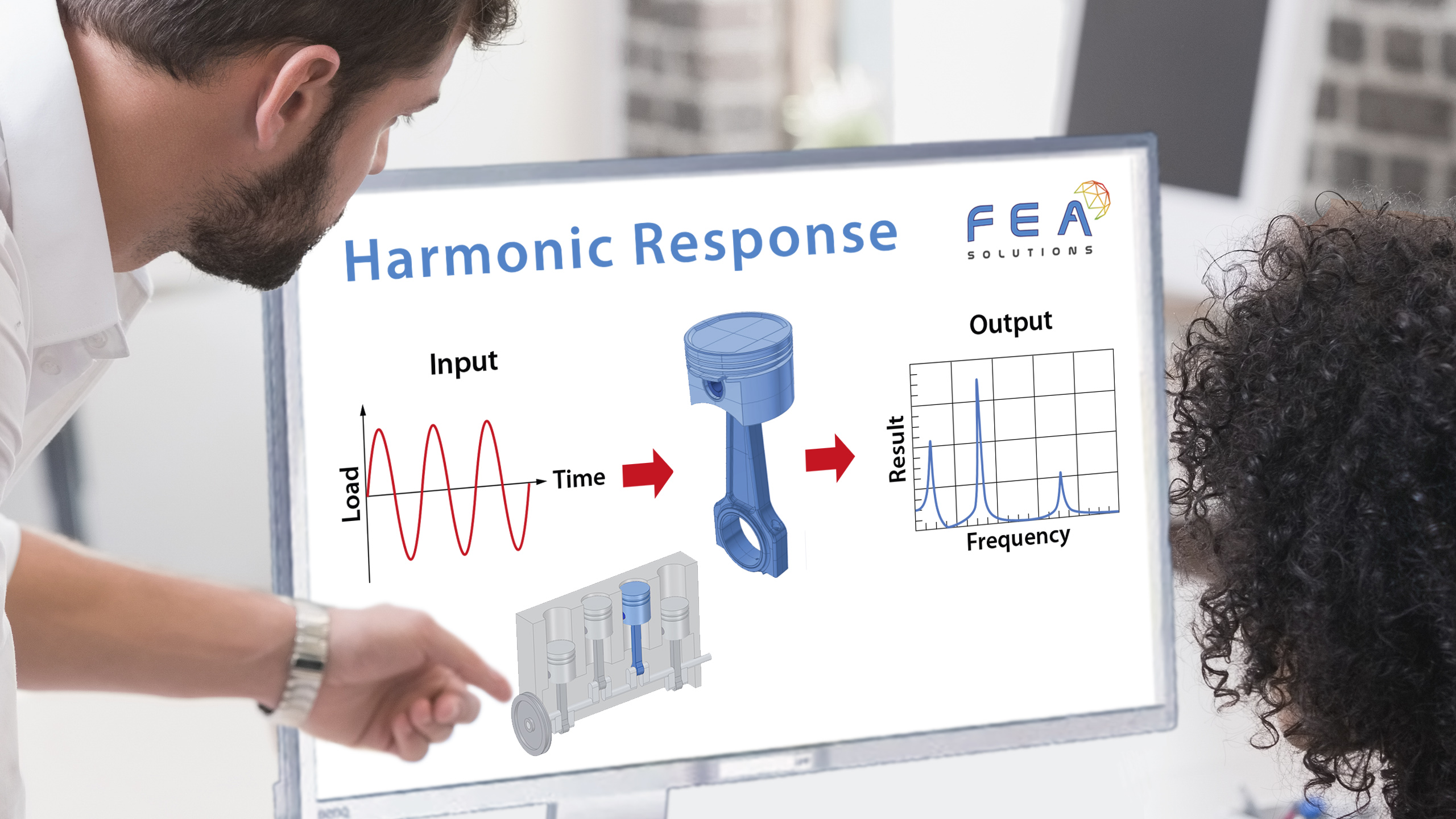
17 Apr Harmonic Response Analysis
Harmonic Response Analysis is a linear dynamic analysis used to determine the response of a system to excitation at specific frequencies. It is also referred to as Frequency Response Analysis.
The prerequisite for a Harmonic Response Analysis is a Modal Analysis, as the input frequencies needed for a Harmonic Response Analysis are the results of a Modal Analysis. Due to the analysis using results already calculated, Harmonic Response Analysis is a type of restart analysis which uses modal superposition to calculate its results. For more information on modal superposition, please read: (https://fea-solutions.co.uk/modal-superposition/).
In a Harmonic Response Analysis, the load applied to the linear model is a steady state sinusoidal load at a given frequency. Loads may be out of phase with one another, but the excitation is at a known frequency.
Harmonic Response Analysis is typically used to calculate the stresses due to steady-state operation of machines, vehicles, or process equipment subjected to continuous harmonic loading, e.g. imbalance of a rotor or cyclic loading in a combustion engine.
A Harmonic Response Analysis is a linear-elastic dynamic analysis that cannot consider any non-linearities in the system. For more information on non-linear behaviour, please look at: (https://fea-solutions.co.uk/non-linear-behaviour/).
Please call us today on +44 (0)1202 798991 for any engineering analysis requirements you might have.
